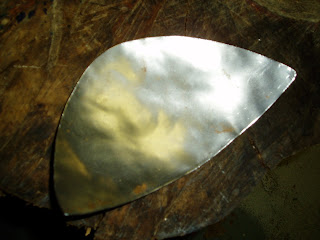So now the time has come, to be rid of the evil little "burrs" that assault my skin.
I have my 6" buffer and sanding pads ready.
I have a big stack of metal.
I have my gloves, goggles, and dust mask.
I am ready to go.
Now the trick of this seems to be to NOT make the edge of the metal into a Knife.
This is accomplished by first cleaning the cut edge of the metal all the way around.
Then sand the top of the edges
Finally i sand the bottom of the edges.
Then Were done!
Now the edges are nice and clean. Plus they wont cut me!
The only major issue i ran into was the use of 6" sanding pads.
The Sharp edges of the metal kept annihilating the pads.
I went through at least 5 pads before i switched over to the 4.5" Flap Wheel.
The only major issue i ran into was the use of 6" sanding pads.
The Sharp edges of the metal kept annihilating the pads.
I went through at least 5 pads before i switched over to the 4.5" Flap Wheel.
Heres a video i shot of me deburring some lames.
And lame is probably what the video is because i don't have the technology to edit it down correctly. I had to use the Flipshare software that came with my camera. But it still gives you a good idea of what i did.
If you do watch it, please take note of the sparks and how cool they are... OHHHHHHHH!
And now that that is done, its on to the Mask!

















































